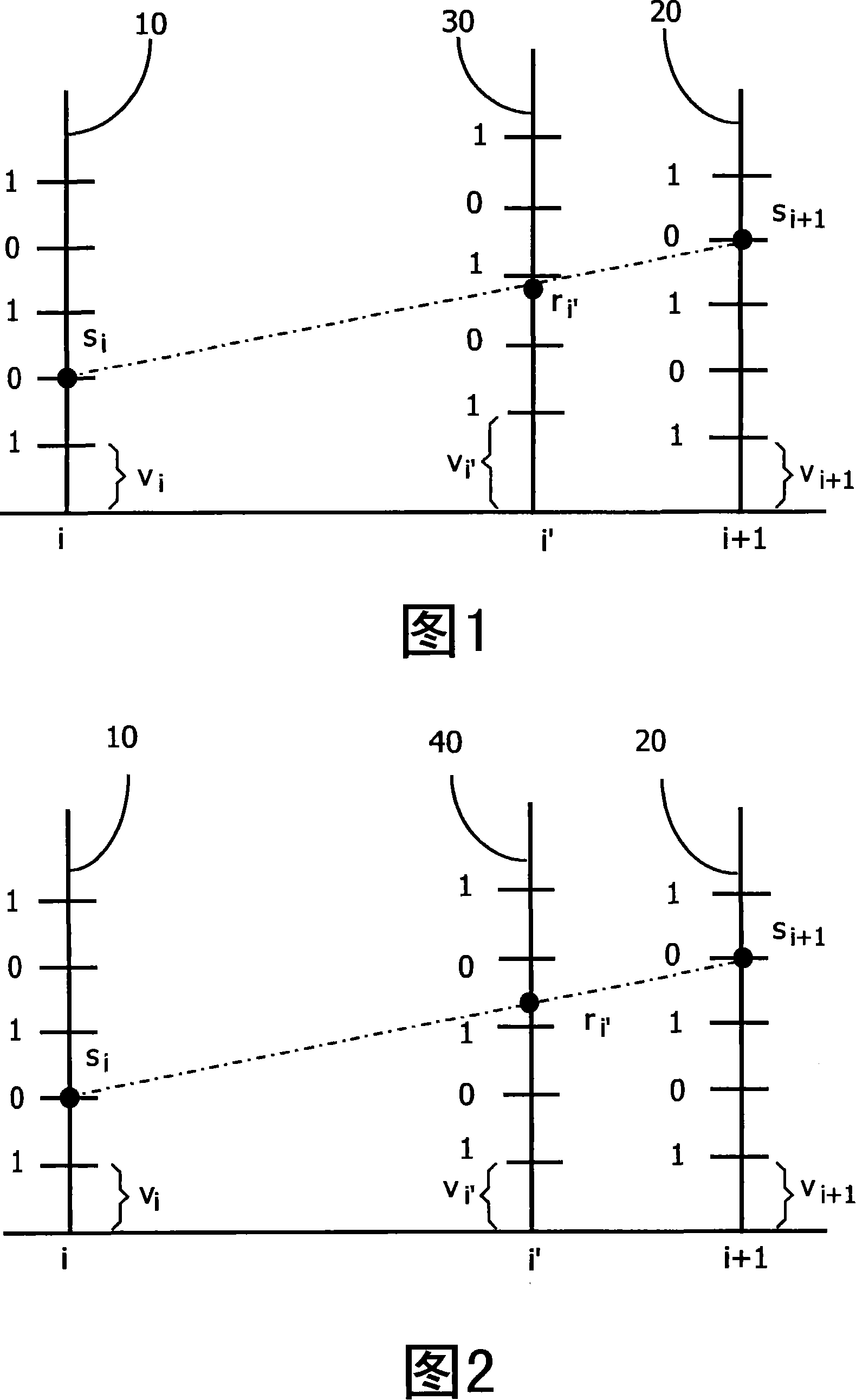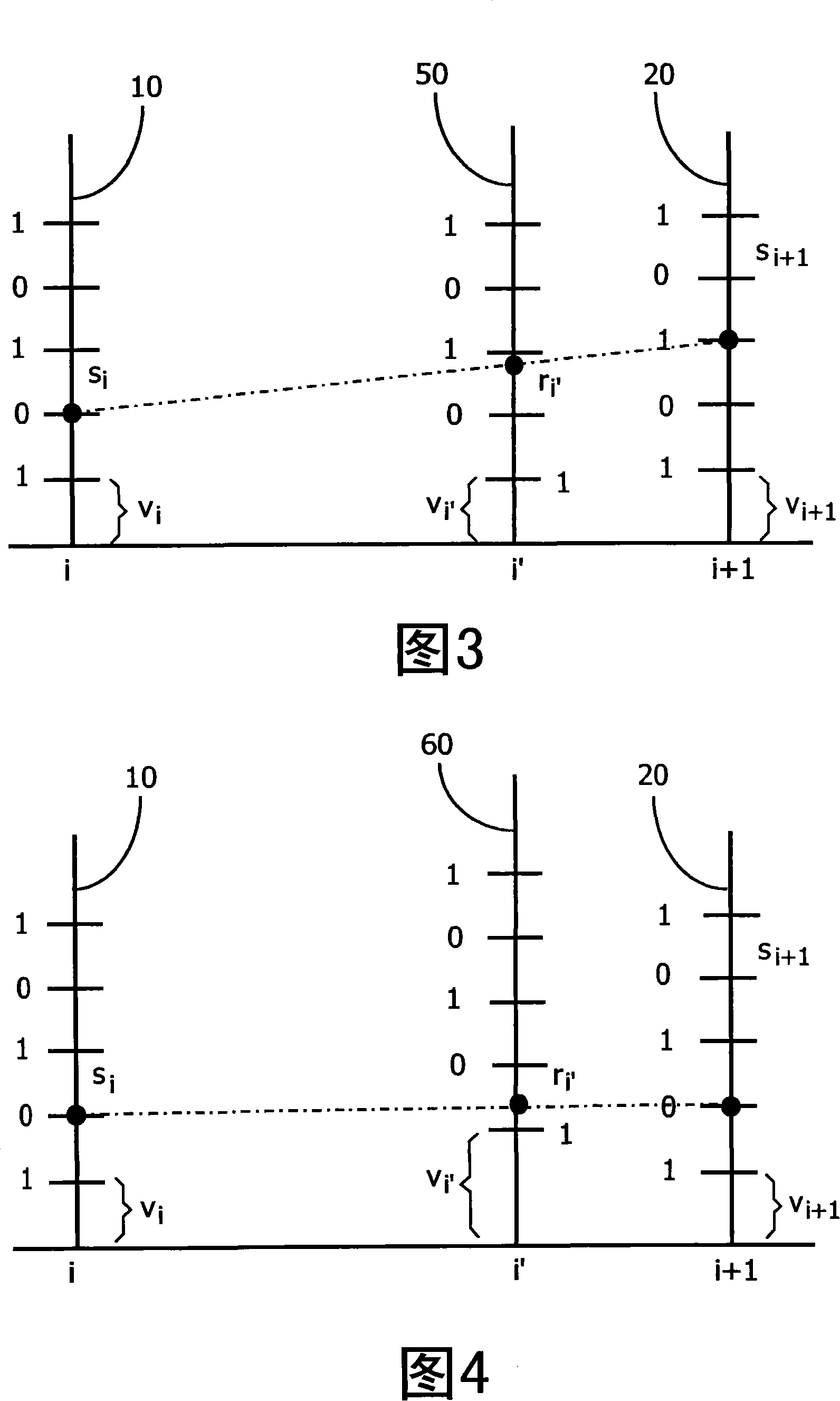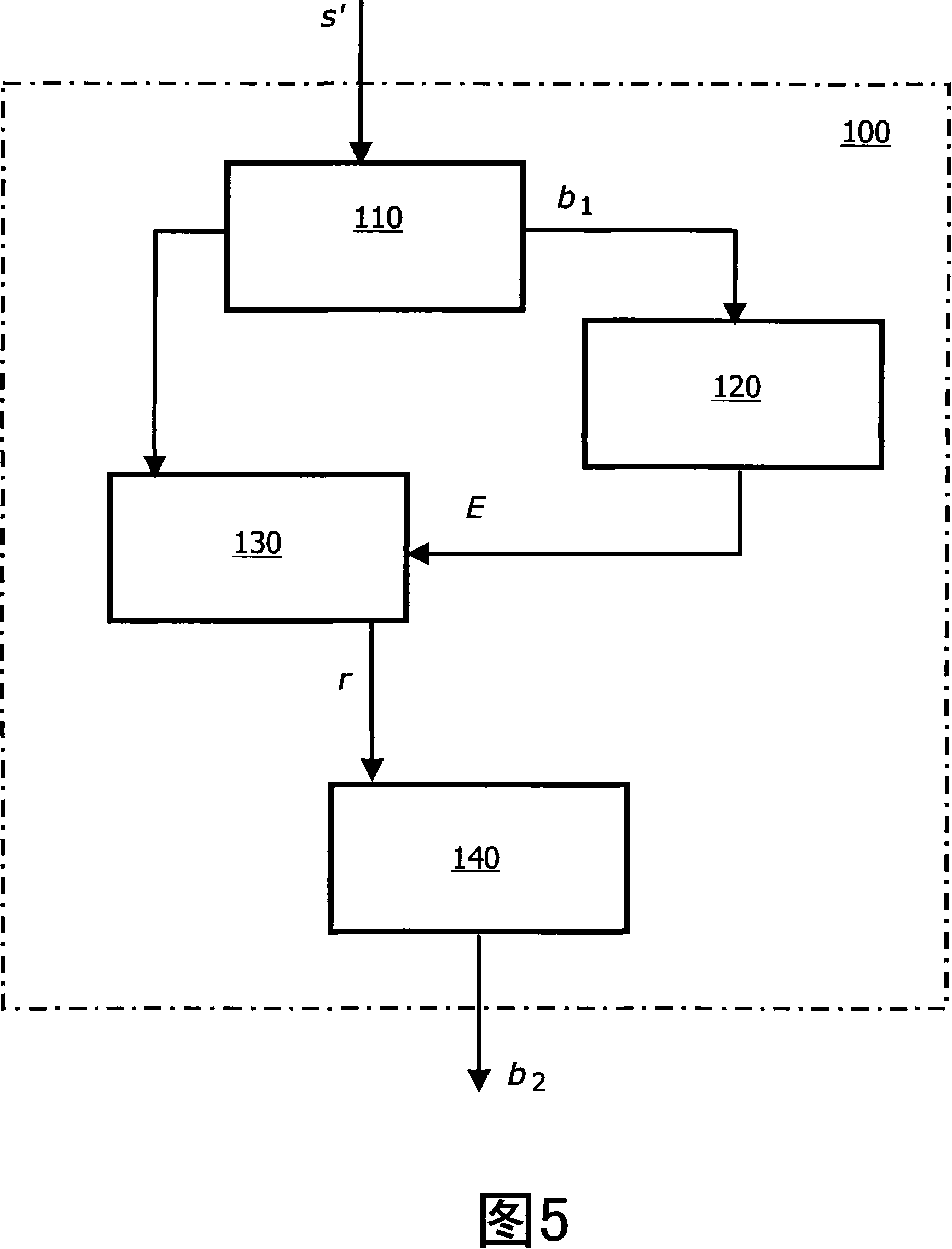Method of quantization-watermarking
A technology of watermarking and watermark embedding, which is applied in image data processing, instrumentation, image data processing, etc., and can solve problems such as insufficient robustness
- Summary
- Abstract
- Description
- Claims
- Application Information
AI Technical Summary
Problems solved by technology
Method used
Image
Examples
Embodiment Construction
[0039] To describe embodiments of the invention in context, three existing general approaches to making watermarks more resistant to geometric transformations are first elucidated.
[0040] In a first existing method of watermarking an audiovisual object, called "autocorrelation", the watermark signal used to watermark the audiovisual object has a known autocorrelation. When adding such a watermark signal to an audiovisual object, scaling the resulting watermarked audiovisual object results in adding the autocorrelation function of the watermark signal to the object being deformed accordingly. When performing watermark detection, the autocorrelation of the embedded watermark signal is estimated from the watermarked audiovisual object. The estimate of the autocorrelation estimation function is compared to a known version of the watermarked autocorrelation function. From the result of the comparison, any deformations that have been applied to the watermarked audiovisual object ...
PUM
 Login to View More
Login to View More Abstract
Description
Claims
Application Information
 Login to View More
Login to View More - R&D
- Intellectual Property
- Life Sciences
- Materials
- Tech Scout
- Unparalleled Data Quality
- Higher Quality Content
- 60% Fewer Hallucinations
Browse by: Latest US Patents, China's latest patents, Technical Efficacy Thesaurus, Application Domain, Technology Topic, Popular Technical Reports.
© 2025 PatSnap. All rights reserved.Legal|Privacy policy|Modern Slavery Act Transparency Statement|Sitemap|About US| Contact US: help@patsnap.com



